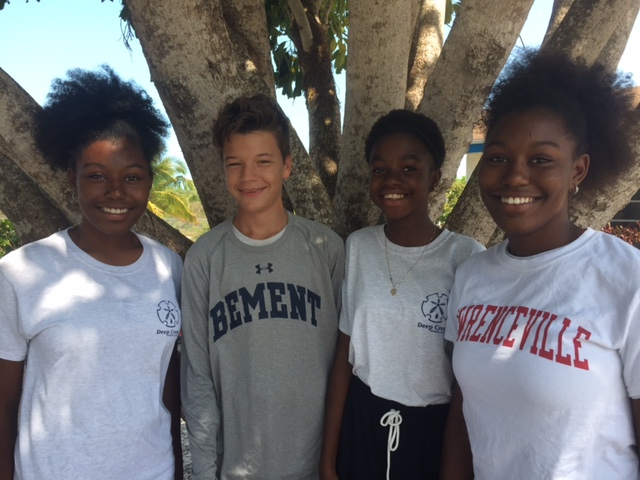The Cape Eleuthera Institute, Island School and Center for Sustainable Development are like one big family and we all appreciate each other’s roles in making our campus so special. This is particularly true for our great human resources and accounting teams, who take care of the ‘behind-the-scenes’ work, so that our big family can run smoothly. However, they are often so busy that they don’t get the chance to see the work going on within the community that they help to create. So sometimes, instead of reaching out, we reach in. This is what happened last Thursday, when staff from the Human Resources and Accounting departments joined forces with the Shark Research and Conservation Team to set an experimental longline. The purpose of this trip was not solely to have a fun afternoon out – this was a cross-training and educational opportunity for everyone involved, and for some, a chance to see their first shark in the wild.
Dr. Owen O’Shea explains how to set a longline to the Accounting and HR team.
Leaving just after lunch, the group set a 35-hook experimental longline just south of our campus, at the mouth of No Name Harbor. The accounts/HR ladies were not afraid to get their hands dirty and were happy to help with baiting the gangions and setting the line. During the 90-minute soak time, Dr. Owen O’Shea and his research team explained the ecological importance of sharks, their role in Bahamian ecosystems and the rationale behind CEI’s long term monitoring program.
As they retrieved the longline, Team HR and Team Accounting were once again at the forefront of the work, taking bait off the gangions and recording data. Soon they were met with their first catch: a beautiful female nurse shark (Ginglymostoma cirratum) just under 2m in length. The initial excitement turned into genuine curiosity, and everyone was keen to interact with the animal and to help with taking measurements and applying tags. It wasn’t long after the shark was released that a large southern stingray (Hypanus americanus) was found on the line. Although surprised to find a stingray caught on the longline, the team worked quickly to safely remove the hook and allow this magnificent female ray to swim away. As a second, larger female nurse shark was hauled in, the rest of the guests had a chance to learn how to take measurements, biological samples and attach dart and cattle tags. By the time the next shark was secured to the side of the boat, a male nurse shark, everyone knew what to do, measuring and tagging the animal efficiently. As the sun weighed heavy in the sky, they headed back to campus, discussing the events of the day and basking in the beauty of the creatures they had seen.
Shark Intern Giulia Cardoso shows Chief Administrative Officer Chenara Carey how to apply a dart tag on a nurse shark.
Administrative Assistants, Sherrall Carey and Janelle Culmer, measure the fork length of a nurse shark.
